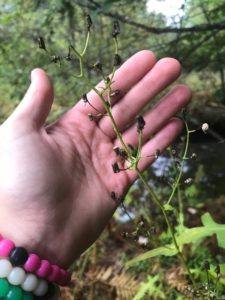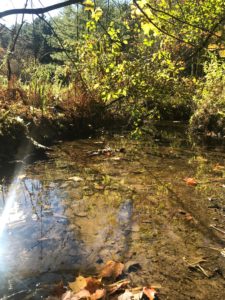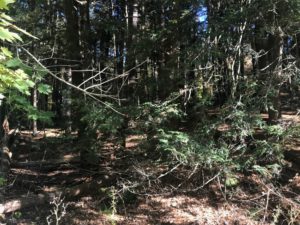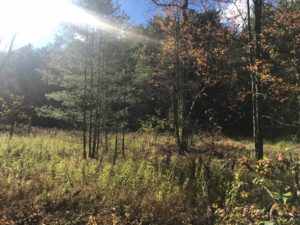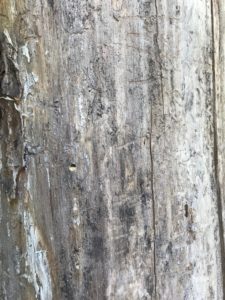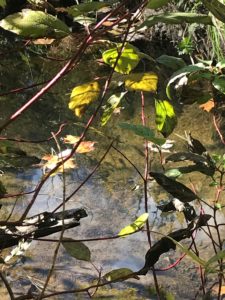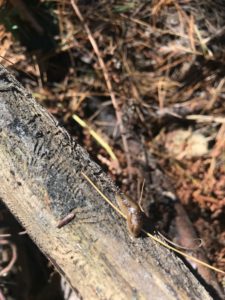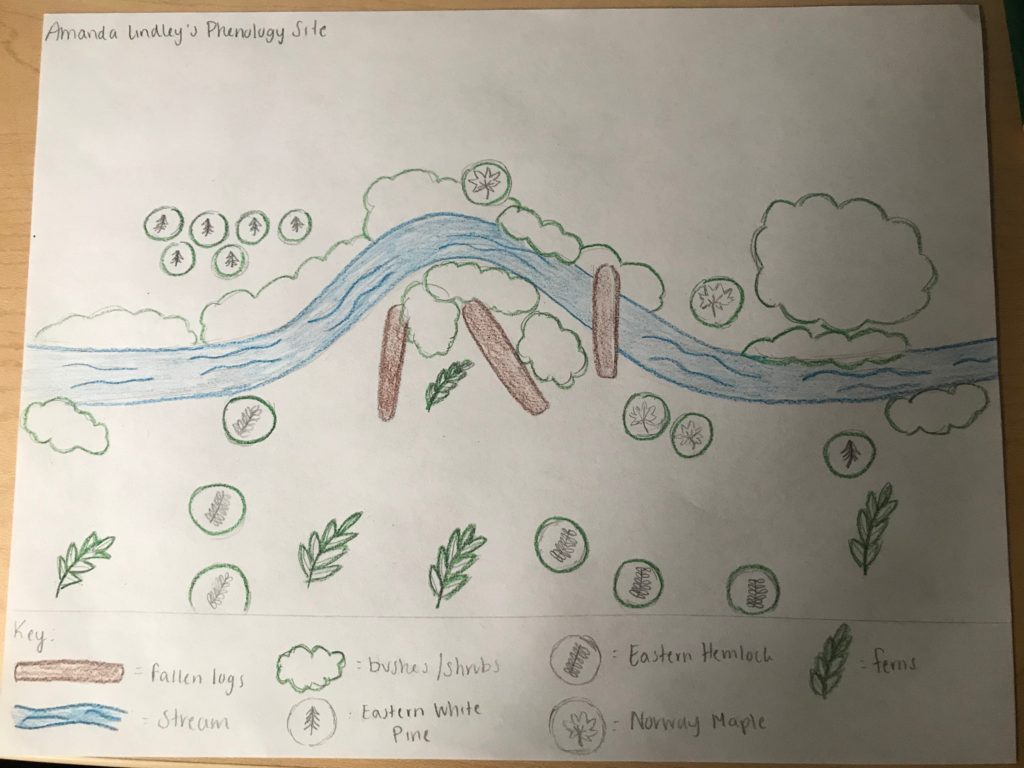Hello and welcome to my phenology blog! Here is a quick view of my site.


To find my spot, enter Centennial Woods through the entrance on Bilodeau Ct. Continue straight down the path over the wooden bridges placed on the ground. Once you reach a small clearing with a trail to the left and a trail straight ahead, continue straight. You will pass over a wooden bridge near a creek. Continue straight down the path. After a short walk, you will reach a small clearing where you can either go up a steep hill to the right or continue straight downhill; go downhill. You should see a stream on your left. Walk a few meters down this path and turn left to reach the stream. There is a small area of land that is covered in ferns and fallen trees that sticks out with the stream curling around it. This is my site! It is roughly .6 miles from campus, or around a 14-minute walk.
I chose this place because it was close to the water and was covered in ferns, which are one of my favorite kinds of plant. It also contained some mushrooms and interesting fungi that I wanted to track as the seasons change.
The vegetation was thick but mostly consisted of dead or dying plants. The majority of the area was covered in ferns, but it was difficult to identify the species since they were already dead. There were 2 fallen trees with some strange fungi growing on them, as shown below. I’ve uploaded a photo to iNaturalist to try to identify the species. (Update: the fungi is called Wolf’s Milk.)
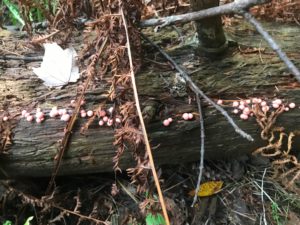
The main species in this area included sugar maples, eastern hemlocks, buckthorn, ferns, and daisy fleabanes. There was one plant that I was unable to identify that I’ve posted below. I uploaded these pictures to iNaturalist and am currently waiting for a response. (Update: The flower is an American aster.)

